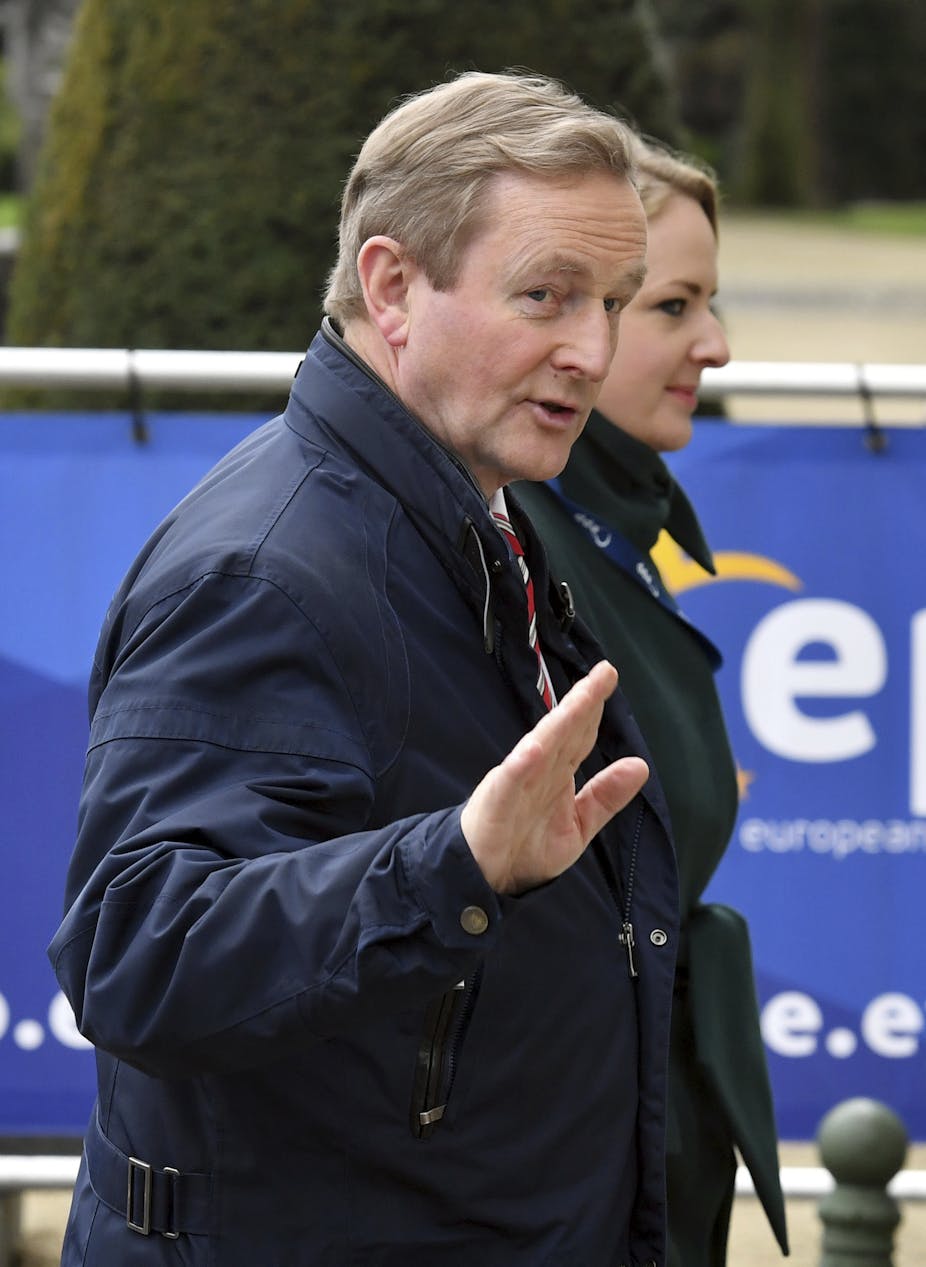On March 16, political leaders from the Irish Republic and Northern Ireland, along with a number of Irish-American politicians, will attend a gala St. Patrick’s Day event at the White House.
Though the White House celebration originated in the Truman era, it took on greater significance in the mid-1990s. That’s when Bill Clinton championed the event as a way of furthering the Northern Irish Peace Process. For all their disagreements back home, Clinton believed, the White House festivities – often featuring long sessions around the piano and the quaffing of Guinness and Jameson’s – could at least temporarily bring together normally antagonistic Northern Irish politicians. The invite list soon ranged from the Irish nationalist Sinn Fein’s Gerry Adams to the Democratic Unionist Party’s Ian Paisley.
The tradition of annual White House-sponsored partying continued into the Bush and Obama administrations, taking a difficult turn only during one of the several crises that marked the Northern Irish Peace Process.
In 2005, responding to the killing of a young Irish republican named Robert McCartney in a Belfast bar frequented by high-level Irish Republican Army figures, Bush “disinvited” Adams from the event. The move was strongly supported by Sen. Edward Kennedy and several other notable Irish-American politicians. But later that year, the IRA announced the end of its long armed campaign and began the final decommissioning of its weapons. With the emergence of relatively stable political institutions in Northern Ireland that followed, the White House bash started up again. It has been going strong ever since.
As a scholar of the Irish-American experience, I have followed this annual party with interest and hope. The fact that it has generally been so uneventful – even dull – is a good sign for Northern Ireland and U.S.-Irish relations.
This year it’s different.
A drumbeat of criticism

In Ireland, a drumbeat of criticism has been directed against both Irish Prime Minister Enda Kenny and Sinn Fein party leader Gerry Adams for their decision to attend the event. Kenny has condemned Trump’s rhetoric in the past. And the fact that he will be leaving office soon means that he’s in a good position to take a stand.
On this side of the Atlantic, Martin O’Malley, the former governor of Maryland and unsuccessful Democratic presidential contender, has called for Irish-American politicians to boycott the proceedings.
What’s going on?
To take the Irish situation first: Many in Ireland feel that they are facing two sides of the same coin.
On one side: Brexit, which will deal a direct blow to the Irish economy and might possibly undermine the delicately balanced machinery of the 1998 Good Friday Peace Accord. A new “hard border” between Northern Ireland and the Republic of Ireland, for example, could be a disaster for the peace process. People and goods now move freely across the border and the shutting down of security checkpoints symbolized the progress that had been made.
On the other side: Donald Trump, whose promises to bring back American jobs could threaten an Irish economy in which Apple, Google and several other U.S. high tech companies have been major job generators.
Then, there is the question of the 50,000 or so undocumented Irish people residing in the U.S.
Though vastly outnumbered by undocumented immigrants from Central America and Mexico, Irish-born men and women have been part of the unauthorized population since the 1980s. The harsh anti-immigration rhetoric and executive actions of the Trump administration have caused a good deal of anxiety in this community, one for which the Irish government has traditionally spoken.
Irish America as a whole presents a more complex picture. The number of American citizens of Irish descent is approximately 34.5 million, compared with the mere 4.8 million residents of the Irish Republic and 1.9 million residents of Northern Ireland.
The fact that 60 percent of white Catholic voters, a group in which Irish-Americans are an important part, voted for Trump may indicate that the politics of anti-abortion and traditional conservative values canceled out the efforts of Democratic candidate Hillary Clinton to wrap herself in the mantle of the Northern Irish Peace Process. Even the decision of the New York-based Irish America magazine to induct her into its “Irish America Hall of Fame” in 2015 didn’t seem to help.
And yet Irish-American conservatism is not the whole story.
There exists a tradition of political dissent in Irish America that has often run against the conservative grain. From militant labor leaders like Mike Quill to the anti-poverty crusader Michael Harrington and the recently deceased New Left leader-turned-Democratic politician Tom Hayden, such figures have represented a kind of alternative liberal-progressive Irish-American tradition. This tradition has sometimes merged with the long Irish-American crusade to free Ireland from British control.
Though this liberal-progressive tradition has grown weaker in recent years, it is far from dead. It is this tradition, as much as the difficulties facing the Republic of Ireland and Northern Ireland in the age of Brexit and Trump, that is making this White House St. Patrick’s gala so different from those that went before.

